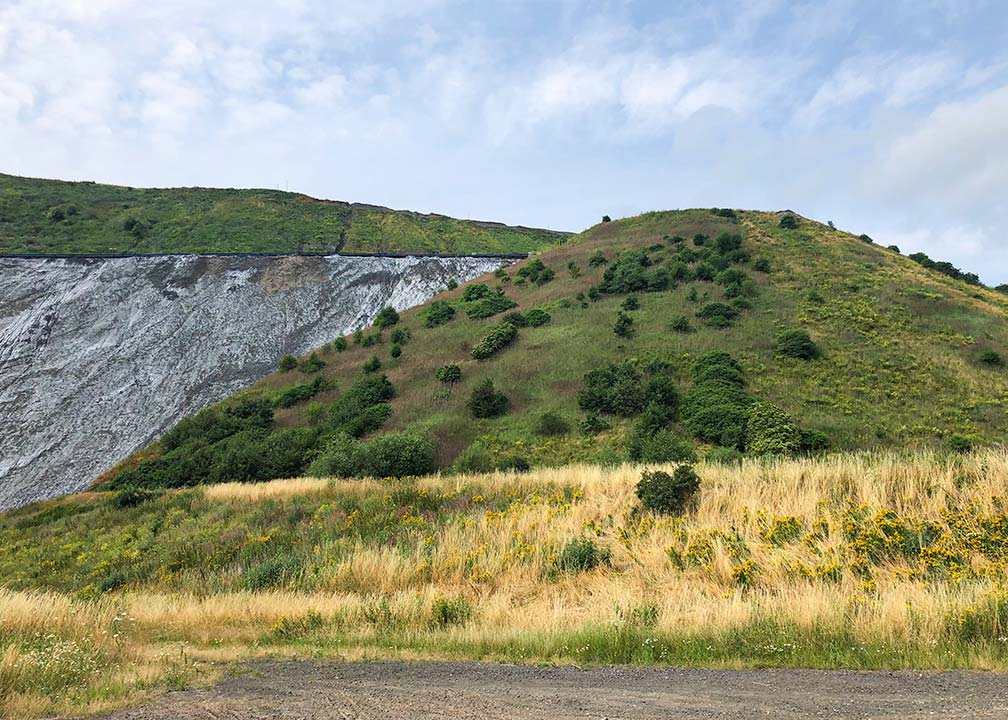Monte Kali
“Monte Kali”, as the Sigmundshall tailings pile is affectionately known among employees. Monte Kali no longer looks like a tailings pile in places. With a height of 120 m and more than 12 ha of vegetated flanks, the potash tailings pile is experiencing successful renaturation.
The covering of this potash tailings pile has been making great progress for years and now a great variety of animals and more than 120 plant species call the Sigmundshall tailings pile their home. Piece by piece the mountain is becoming embedded by nature.
An invaluable asset for nature
The Sigmundshall tailings pile is a prime example of how successful and valuable the covering of tailings piles is for nature. Many plant species, as well as insects and even some bird species such as buzzards and hawks have settled here. Dr. Arne Schmeisky, a member of the project development team for tailings cover at REKS, works closely with the K+S project team and is involved in the further development of the covering processes. REKS and K+S will jointly promote the sustainable management of potash tailings piles.

“REKS' know-how will contribute to responsible permanent potash tailings pile coverage.”
Dr. Arne Schmeisky, Contributor Project Development Greening of Tailings
Interesting to know
The aim of tailings pile covering is to greatly reduce the formation of saline tailings water, which is caused by precipitation. The reclamation of the tailings pile will evaporate more than 80% of the precipitation.
Regional and sustainable:
Covering material directly from Sigmundshall

The covering of the Sigmundshall tailings pile has been in progress for more than twenty years and is almost half completed. In contrast to the Friedrichshall tailings pile, where K+S Baustoffrecycling uses soil and construction waste from regional customers for covering, the covering material for the Sigmundshall tailings pile comes directly from the K+S site in the town of the same name. For this purpose, a substrate is used which is produced at the Sigmundshall site in the REKAL plant itself.
In this case, REKS makes another important contribution: the acquisition of salt slag from the secondary aluminum industry for the REKAL plant. The substrate used is produced from the recycling of these salt slags and consists of alumina, silicates and salt. In a patented process, these components are used to produce an outstandingly suitable material for the greening of the potash tailings pile. The substrate is applied to the heap in a layer of about five meters. After about two years, due to rain and weather, the salt components are flushed out and then plant and grass seeds are spread and watered. From now on, the further process is left to nature. And the results are impressive: “The Sigmundshall example shows that covering not only reduces the formation of salt water, but also makes a valuable contribution to biodiversity,” says Arne Schmeisky.


